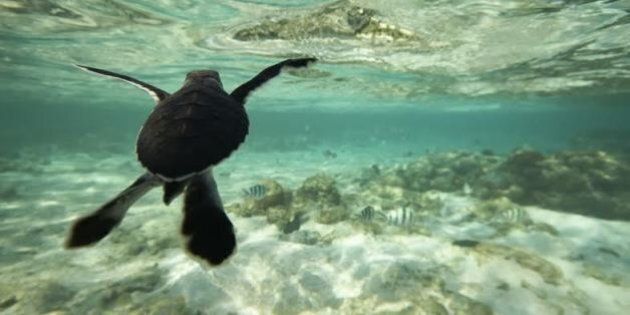
The first Australian turtle hatchlings of the 2015/16 season have arrived this week at Bundaberg’s Mon Repos beach and it's just as cute as you'd imagine.
This hatchling season on eastern Australia’s largest marine turtle rookery is expected to be busier than usual, with the number of turtles nesting up on figures recorded in the previous season.
This week, 60 lucky tourists witnessed the sight of baby sea turtles scrambling for their first breaths, before hatching and taking the first steps of the mammoth cross-continent journey ahead.
With loggerhead turtles being critically endangered, Queensland Parks and Wildlife Service rangers are dedicated to conserving the nesting habitat of these tiny little creatures to ensure they make their way safely to the ocean. If they make it that far, it gives them a promising start to a life that can span up to 100 years.
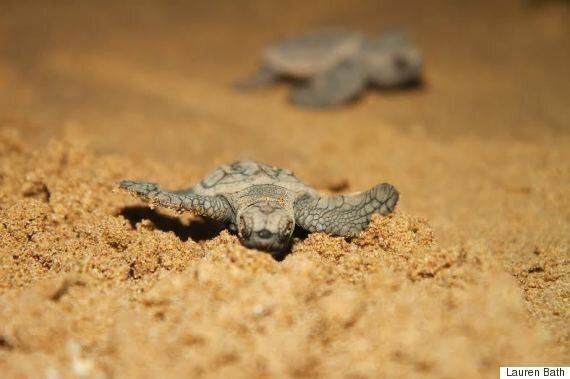
Thousands of people travel to Bundaberg each year to see the magic of the nesting season at Mon Repos and ranger-in-charge Cathy Gatley told The Huffington Post Australia the increase in the number of turtles visiting the beach was expected to result in a busy hatchling season.
“So far this year we have had 351 turtles nesting at the beach, with thousands of eggs laid, so the hatchling season will be filled with lots of magical moments for both tourists and my team,” she told HuffPost Australia.
“One of the biggest focus points for my team throughout the season is continuing to educate visitors and locals on ways they can help protect the endangered loggerhead turtle through initiatives like Cut the Glow to help turtles go."
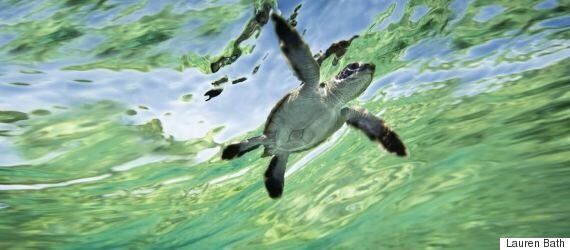
Cut the Glow is a Bundaberg Regional Council campaign to help locals cut the glow of lights in the area, affecting the beach. This includes the planned installation of solar powered 'turtle friendly' LED lights and planting of coastal vegetation buffers.
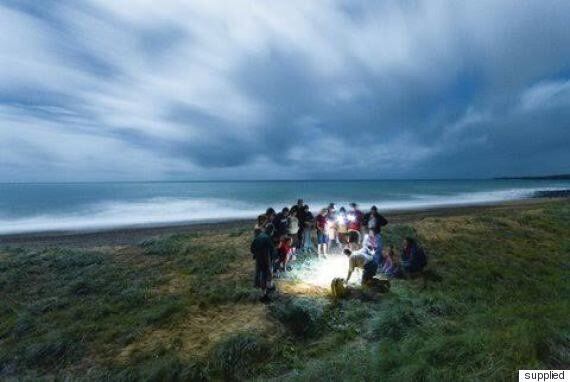
Tourists observing a turtle laying her eggs. Picture Supplied
Only one in 1000 turtles actually make it to maturity. With that figure in mind, the rangers have a huge responsibility to take care and educate others on how to give them the best chance of survival.
Hatchlings use the trip from their nest across the sand to imprint the orientation of the Earth's magnetic field so they can return to the same area to breed in another 30 years’ time. It’s really like an inbuilt GPS system.
“This year we welcome back the world's oldest-known tagged turtle for her 13th nesting season -- 39 years after her first nesting season at Mon Repos,” Gatley said.
“Even after 20 years working with these incredible creatures at Mon Repos, I’m still in awe of the journey that they take each year, even more so when they continue to return to nest at our beach.”
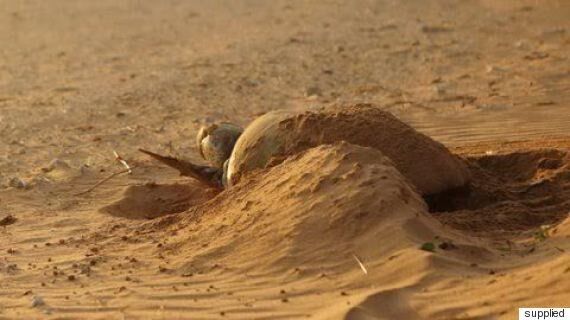
A loggerhead turtle preparing to lay her eggs.Picture Supplied
Nightly Turtle Encounter tours at Mon Repos Regional Park will continue until 20 March 2016 and bookings are essential. Hatchlings are best viewed from January until late-March.